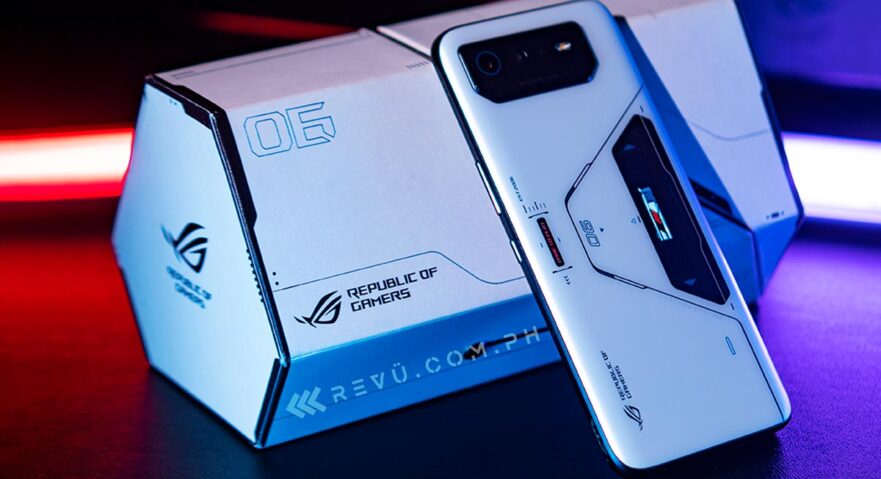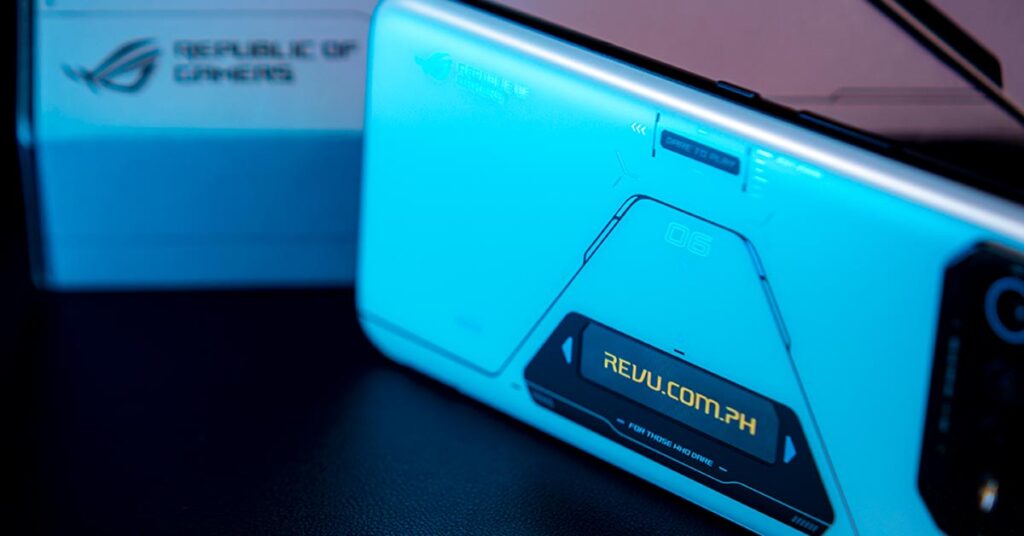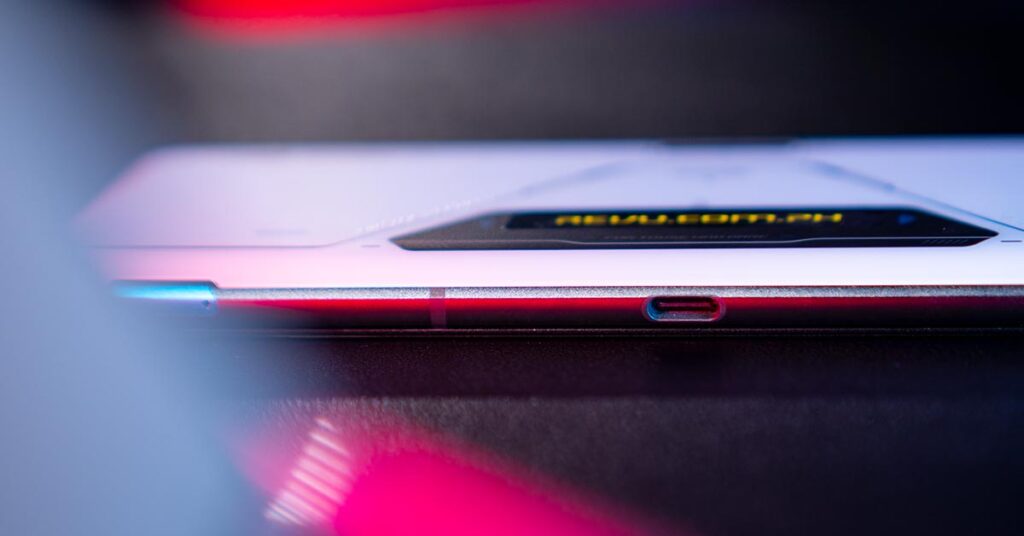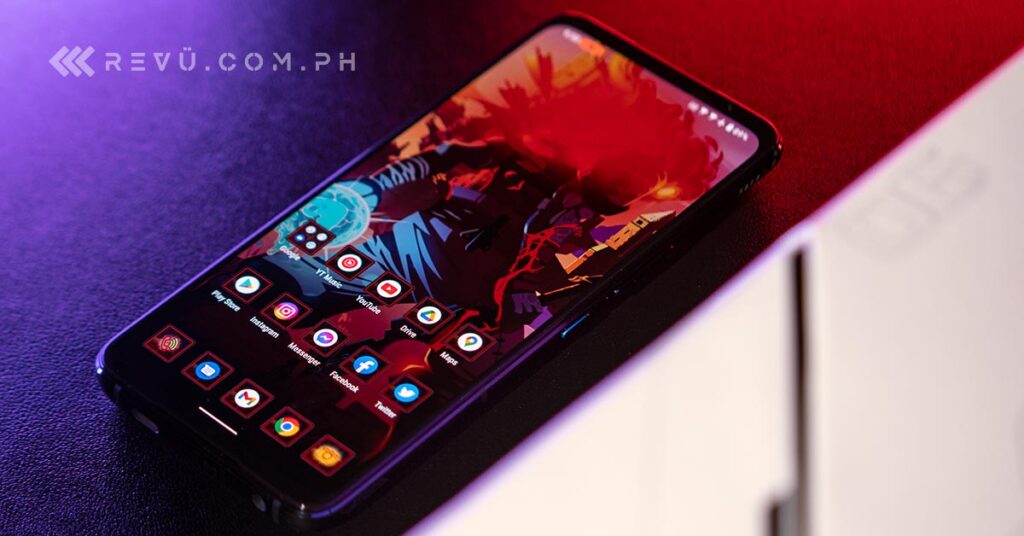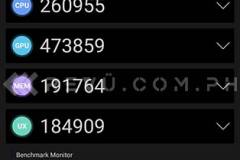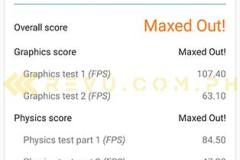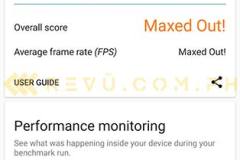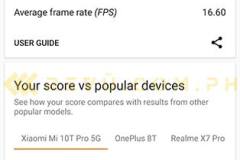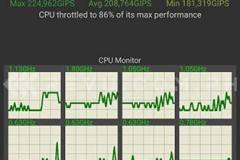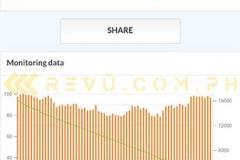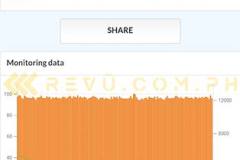Another year, another addition to the popular ASUS ROG Phone line — and another chance to trounce existing benchmark records held by the competition.
In the Philippines, the ROG Phone 6 Pro is priced at P64,995, or roughly $1,154 converted, for the lone 18GB/512GB configuration. It arrives mid-September, a month after the release of the ROG Phone 6, which starts at P47,995 ($852) for the base 12GB/256GB model.
This year, ASUS has dropped the Ultimate branding from its top-end model, although the ROG Phone 6 Pro is arguably no less deserving of the “ultimate gaming phone” title if we’re going by pure performance alone. After all, it’s one of the first gaming phones built around the fastest Qualcomm mobile CPU yet (the other being the standard ROG Phone 6), and it’s kitted with a generous serving of speedy memory, too.
But ASUS didn’t stop there. The Taiwanese company also announced a slew of accessories that can maximize your gaming experience, including a redesigned AeroActive Cooler with an active peltier cooling element on the inside. There’s also the Kunai 3 Gamepad sold separately that will transform your phone into a Nintendo Switch-like device.
So, is it overkill and do you need to upgrade if mobile gaming is your preferred pastime? Read our review for our verdict on the ASUS ROG Phone 6 Pro at launch.
In case you missed this article: Watch: Our ASUS ROG Phone 6 Pro experience thus far. For more of our videos, subscribe to our YouTube channel
As expected, the ROG Phone 6 Pro introduces small tweaks and wrinkles to the aggressive — yet very familiar — ROG aesthetic to make this year’s entry different and fresh for 2022. Crucially, the “Dare to Play” RGB logo, which is set against a black background for better visibility, is located on the center left-hand side, opposite the ROG Vision matrix display that has shifted to a vertical position on the right.
The rear panel is smooth and feels nice to the touch, but it doesn’t make the ROG Phone 6 Pro more hand-friendly by any means due to its sheer size and weight. The latter is further exacerbated by the handset’s advanced cooling system and high battery capacity.
If you’re not familiar, the 2-inch secondary PMOLED screen around the back is mostly decorative, like the RGB lighting on most other gaming phones. However, it will also notify you of the ROG Phone 6 Pro’s battery status while charging and alert you of incoming calls without needing to pick up the device or unlock the screen.
You can enable and disable the ROG Vision feature in the Armoury Crate app. Here, you likewise have the option to change the animation that plays when you unlock your phone, launch a game, turn on X Mode, plug in a charger, or receive a call.
You can also create your own animation or graphic using the included editor in the Armoury Crate app, or choose from one of many ROG Vision styles that comes with several dynamic themes you can download and install from the in-built Theme store.
Some of the themes cost a few bucks, but most are free, including some high-quality themes that were inspired by video games such as Dead Cells, Honkai Impact 3rd, and Battle Chasers: Night War. Many of these also come with an alternate wallpaper for when you enable X Mode.
Another welcome returning feature are the AirTrigger ultrasonic sensors placed on the aluminum frame that can detect up to 14 different gesture actions, including taps and swipes. ASUS’ Game Genie software makes mapping any game’s touchscreen controls to the shoulder buttons or a physical controller like the Kunai Gamepad easy and intuitive.
This year, ASUS introduced a new Press and Lift system that lets you add seperate controls to the actions of pressing and lifting a trigger. The ROG Phone 6 Pro supports gyroscopic aiming while holding an AirTrigger as well, which makes shooters easier to play without a controller or a mouse and keyboard.
There’s a 3.5mm standard headphone jack, too, which is always a pleasure to see on a gaming-centric device. Unfortunately, you don’t get a microSD card slot to expand the onboard storage.
You still get two USB-C ports on this year’s iteration — one on the bottom, as usual, and another along the edge of the ASUS ROG Phone 6 Pro, in case you want to attach the AeroActive Cooler 6 thermoelectric cooler add-on or charge the device while playing or watching a video in landscape mode, or both since the clip-on accessory has a USB-C port at the base.
The AeroActive Cooler 6 is easily the largest and most impressive of its kind thus far. Not only does it boast a centrifugal fan that effectively dissipates the heat from the motherboard and chipset outwards, it also has a Peltier element inside to keep the surface temperature of the phone up to 25 degrees cooler in Frozen mode, the most intense available on the ROG Phone 6 series. This element uses electricity to rapidly pump heat away from one side of the cooler to the other side where the fan is positioned, hence the need for a charging cord, as the phone can’t power the unit by itself.
The AeroActive Cooler 6 works incredibly well, and we found it to be as useful as advertised in terms of unlocking the smartphone’s maximum performance potential while plugged in through the cooler’s port, which lets you switch to the Frozen setting. It still comes with RGB lights, but you also get four omnidirectional buttons and a more reliable kickstand this time around.
Notably, the ASUS ROG Phone 6 Pro (and its vanilla sibling) brings an IPX4 rating for dust and water resistance to the series, but it seems to have come at the expense of the rear-mounted touch sensor of the previous-gen model. That aside, having some protection is better than none against the elements — and on a phone with RGB lighting and a full-color display on the rear panel no less!
The E4 AMOLED screen on the ROG Phone 6 Pro is mostly the same as that on the ROG Phone 5s Pro and this year’s ROG Phone 6. That means you’re basically looking at the same 6.78-inch AMOLED affair with a Corning Gorilla Glass Victus glass screen, FHD+ resolution, and support for HDR10+ content. As expected, the display brightness hits a peak of 1,200 nits in auto-brightness mode. Likewise, the display has always-on functionality, as well as fingerprint unlocking via an optical sensor embedded in the screen assembly.
The panel is faster on the latest model, though, offering refresh rates of 60Hz, 90Hz, 120Hz, 144Hz, and going all the way up to 165Hz, to go along with a 720Hz touch-sampling rate. It’s an excellent display for gaming and streaming content — don’t get us wrong — but it’s nothing that we haven’t seen before. It would have been nice to upgrade to a higher resolution, though we suppose that’s off the table for now if ASUS wants to hit the 165Hz threshold that other gaming phones have offered for a while now.
The Google Play Store doesn’t list which games support high refresh rates. For that, you’ll need to open the Armoury Crate app to see the list of games that can maximize the ROG Phone 6 Pro’s super-fast display. Spoiler alert: The list is thin and lacking in AAA titles at the moment. There just aren’t many mobile games that support 165Hz panels, but the hope is that more developers will catch the trend in the coming years.
Image quality has always been a hot topic among devices like the ASUS ROG Phone 6 Pro, primarily because many gaming phones compromise on the camera experience for raw performance and extended endurance. As much as we had hoped the latest ASUS phone to be the exception rather than the norm, so far, that doesn’t seem to be the case.
Sample shots
The ROG Phone 6 Pro swaps out the 64-megapixel main camera of its predecessor for a 50-megapixel, f/1.9 shooter based on Sony’s IMX766 sensor. In case you’re wondering, the ROG Phone 5s Pro and its predecessors, the ROG Phone 5 and ROG Phone 3, all used the Sony IMX686 Quad-Bayer sensor.
There’s also a 13-megapixel ultrawide option and a 5-megapixel unit for closeups here, although we found the primary camera to be a better choice for macro shots when the digital zoom is used, as is more often than not the case. The ultrawide camera is decent in well-lit environments, while the main camera performs on a par with most upper-midrange and sub-flagship models you’ll find on the market today; it’s a little underwhelming if you’re coming from a modern iPhone or Galaxy flagship.
The 12-megapixel selfie camera along the top bezel is solid, however. Despite offering fewer megapixels than the ROG Phone 5s Pro, it can render some fine facial detail; the bokeh looks realistic and natural in Portrait mode; and there are little to no issues with edge detection in most lighting situations.
ASUS’ native Camera app might be a bit barebones for some users as well. Besides the usual Pro and Night modes, there’s little else to get excited by with the software package. There are no filters and really no amenities other than the standard options.
That said, the ROG Phone 6 Pro may be a tough sell if you’re after image-quality improvements. Then again, we don’t expect gaming phones to match up well with the best camera phones out there, since that’s not what makes them so attractive to a certain subset of smartphone users. Which brings us to our next point.
Benchmarks
This early, we’re crowning the ASUS ROG Phone 6 Pro as the king of benchmarks and real-world performance in the vast Android landscape. Two things that have made this possible: Qualcomm’s top-of-the-line 4nm Snapdragon 8 Plus Gen 1 5G chipset coupled with 18GB of fast LPDDR5 RAM, plus the custom engineering ASUS has done to slot the motherboard and chip at the center of the phone, between the two separate cells that make up the 6,000mAh battery pack, to ensure that the cooling solution inside can cool down the processor with and without the help of the AeroActive Cooler 6.
Although Xiaomi is the first to adopt the Snapdragon 8 Plus Gen 1 in its 12S series, the ROG Phone 6 Pro is the first gaming phone powered by the said platform — and it surely won’t be the last. However, as far as taming the newest Snapdragon is concerned, that’s a whole different thing entirely.
By now, we’re quite familiar with the 8th Gen line and its potential throttling issues if not cooled properly. The ROG Phone 6 Pro is currently the only Snapdragon 8-based phone we tested that didn’t succumb to thermal throttling after a while of running the CPU Throttling Test app in X Mode or high-performance mode. The only caveat is that the surface of the device gets a little toasty after about 30 minutes of intense testing, which is proof that the ASUS ROG Phone 6 Pro is doing a great job of keeping its internals as cool as possible.
Once you attach the thermoelectric cooler, though, you can essentially forget about the thermal throttling and surface temperature altogether, as the smartphone will deliver the best-case performance under any scenario as long as you keep the cooler plugged in and running on external power to enable Frozen mode.
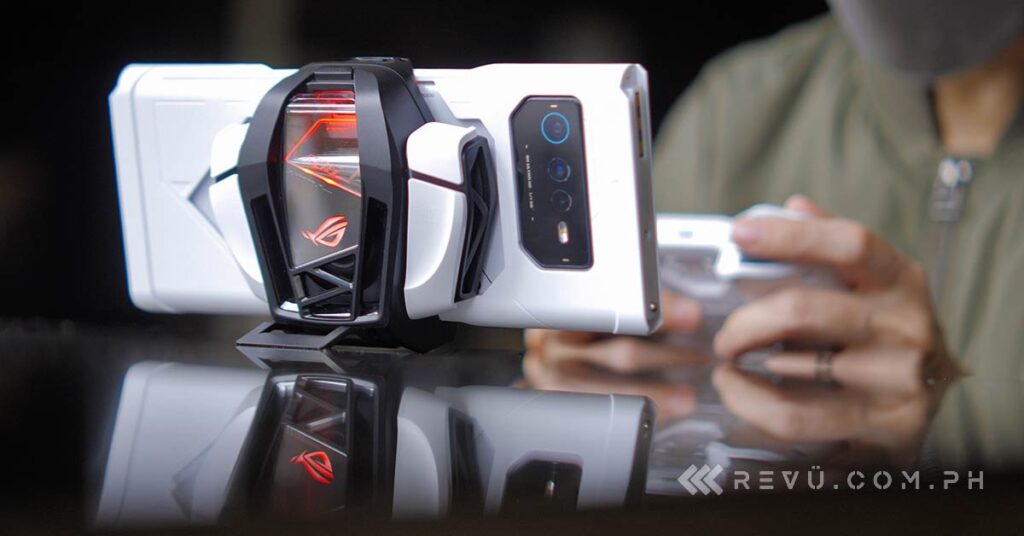
The ASUS ROG Phone 6 Pro is currently the only Snapdragon 8-based phone we tested that didn’t succumb to thermal throttling after a while of running the CPU Throttling Test app in X Mode or high-performance mode
In Antutu, our unit with 18GB LPDDR5 RAM and 512GB of UFS 3.1 storage registered a high score of 1,111,487 points, easily smashing previous highs we recorded on devices based on the Snapdragon 888 Plus and Snapdragon 8 Gen 1 chips — even without the AeroActive Cooler 6 attachment.
If you’ve watched our video on the ROG Phone 6 Pro, you probably know that the other accessory we think you should purchase — and we can confirm that ASUS Philippines will officially offer it here at a later date and at a still-undisclosed price — is the JoyCon-like ROG Kunai 3 Gamepad. When used with the Game Genie software, you’ll be able to map the virtual controls of any game to the gamepad, so you can play your favorite games the way you want them to be played.
Imagine ditching cramped onscreen controls and playing Genshin Impact, GTA San Andreas, Titan Quest, and more using a physical controller that is designed to be used independently, but also alongside the phone, and can be fully customized if you’re not keen on the default controls. Of course, you can also use the Kunai 3 Gamepad to play controller-supported apps such as Diablo Immortal, NBA 2K, and Xbox Cloud Gaming via Game Pass, with the gamepad perfectly mimicking the layout of the Xbox controller without any setup required.
For all-day battery life, there’s a 6,000mAh battery inside that supports fast charging, same as last year’s model. Based on our testing, the ASUS ROG Phone 6 Pro can be charged from zero to full in under an hour, or about 70% after 30 minutes plugged in, using the included 65-watt fast charger.
Final thoughts
Not much has changed since last year’s ROG Phone iteration. And that’s probably for the best. Previous generations in the ROG Phone line were the industry’s gold standard for mobile gaming, despite many challengers knocking on ASUS’ door over the years, and the ROG Phone 6 Pro has proven itself to be worthy of the crown.
The camera system is modest by 2022 standards, but all the ingredients you need for the ultimate gaming phone — the best-in-class performance, the aggressive styling to go along with a zippy display and a big battery, and the rich suite of gaming accessories — can be found here — and nothing else comes close.
If money isn’t a huge concern and gaming is what you want to use your next smartphone mostly for, then this year’s release is a no-brainer. ASUS has set the benchmark once again.

‘Previous generations in the ROG Phone line were the industry’s gold standard for mobile gaming, despite many challengers knocking on ASUS’ door over the years, and the ROG Phone 6 Pro has proven itself to be worthy of the crown’
— REVU.COM.PH
ASUS ROG Phone 6 Pro specs
- 6.78-inch FHD+ Samsung E4 AMOLED display, 165Hz refresh rate, 720Hz touch sampling rate, HDR10+
- 4nm Qualcomm Snapdragon 8 Plus Gen 1 processor with 5G
- 18GB LPDDR5 RAM
- 512GB UFS 3.1 storage
- Triple 50-megapixel main, 13-megapixel ultrawide, and macro cameras
- 12-megapixel front camera
- Under-display fingerprint reader
- 6,000mAh battery with 65-watt wired charging
- IPX4 splash resistance
- ROG Vision rear panel
- Android 12
- Color option: white
Preorder details for the Philippine market can be found here.
Share this Post


